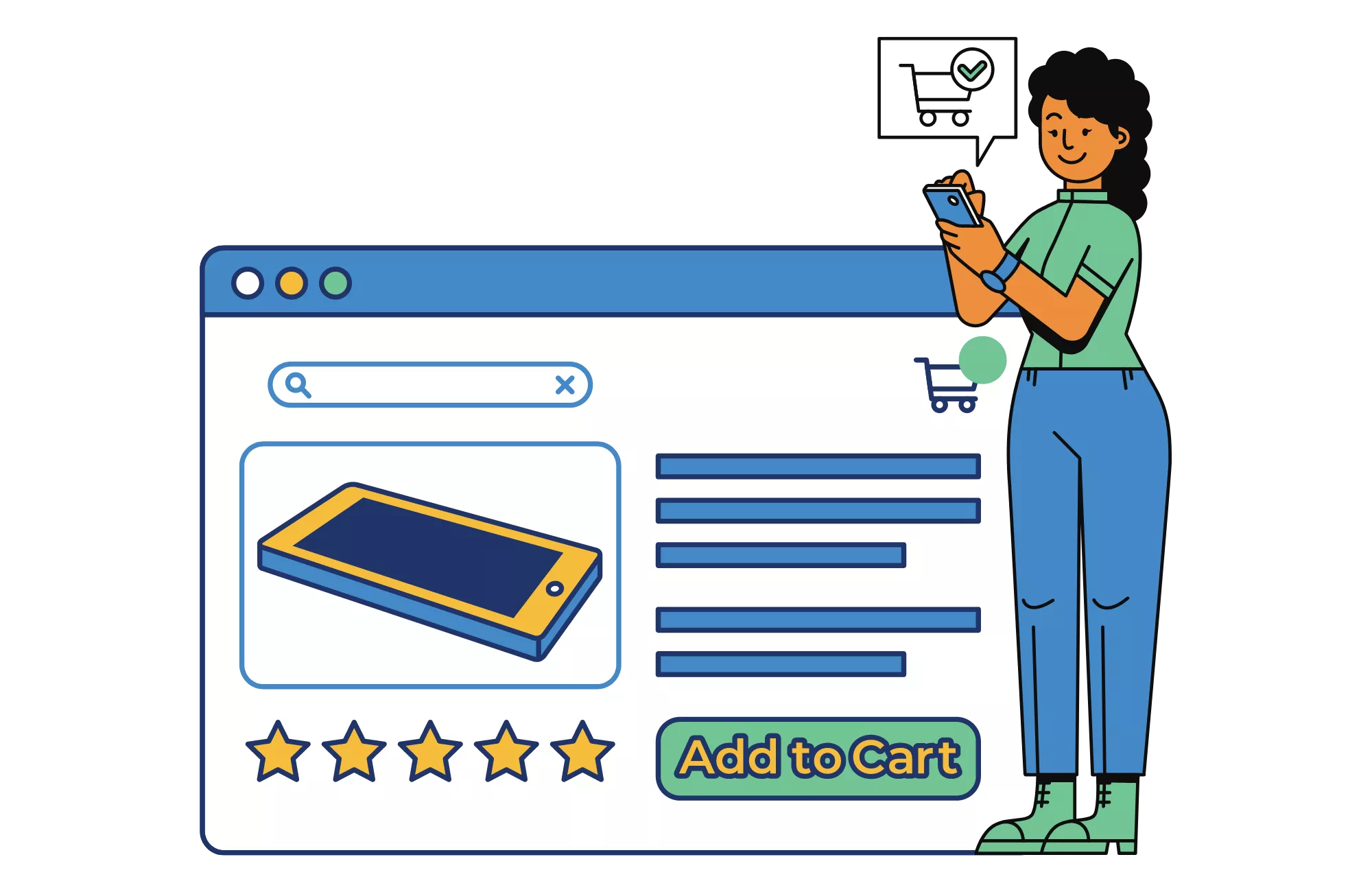TABLE OF CONTENTS
- Amazon Seller Services vs. Amazon Pay
- What Are Amazon Chargebacks?
- Amazon Seller Chargebacks
- Amazon Pay Chargebacks
- How to Respond to Chargebacks on Amazon
- How to Fight Amazon Chargebacks
- How Does Amazon Determine Responsibility for Chargebacks?
- How to Use Amazon Seller Protection with Amazon Pay
- How to Fight Chargebacks Amazon Won’t Protect You Against
- Amazon Chargeback Fees
- How to Prepare for Future Amazon Chargeback Claims
- How to Avoid Amazon Chargebacks in the First Place
- Amazon Vendor Chargebacks: Final Thoughts
- FAQs About Amazon Chargebacks
Most merchants selling on Amazon can agree that receiving an Amazon chargeback alert is a stressful experience. While Amazon is one of the most popular online marketplaces, accounting for 25% of the United States eCommerce market, its chargeback system can be complicated.[1]MarketPlace Pulse. “Amazon Marketplace is 25% of US E-commerce”. Accessed on November 23, 2022. Additionally, the Amazon chargeback process is a unique experience depending on whether you are using Amazon Seller or Amazon Pay. Below, we detail the two different chargeback processes for merchants like yourself!
Amazon Seller Services vs. Amazon Pay

Before diving into specifics, let’s define the difference between Amazon Seller and Amazon Pay.
Amazon Seller allows merchants to operate an eCommerce storefront within Amazon’s platform. A customer finds the product on Amazon, purchases the product on Amazon, and the merchant or Amazon fulfills the order. Once the product ships, Amazon sends the merchant a check for their earnings.
Meanwhile, merchants operating their own eCommerce sites may utilize Amazon Pay. Similar to PayPal, Amazon Pay enables customers to pay by logging into their Amazon account without inputting card information into the eCommerce website.
What Are Amazon Chargebacks?
Amazon chargebacks are just like any other chargeback. A chargeback is when a customer opens a claim with their credit card issuer for a transaction. This can happen for a number of reasons, including fraud, friendly fraud, or merchant error. Specific examples include an undelivered product, a broken or damaged product, an unrecognized purchase on a bank statement, or a fraudulent charge via stolen credit card credentials.
Keep in mind that Amazon Seller and Amazon Pay chargebacks differ from one another. Below, we explain their differences.
Amazon Seller Chargebacks
In the event of an Amazon chargeback via Amazon Seller, the chargeback is issued directly to Amazon since they are the merchant of record. Amazon will contact you to see how you would like to proceed with the chargeback. You can either accept the chargeback and issue a refund or dispute the chargeback by representing your case via Amazon.
Amazon Pay Chargebacks
With Amazon Pay, the card issuer will contact Amazon. From there, Amazon acts as a mediator instead of the merchant of record. Amazon Pay will then put the chargeback into one of two categories:
- Unauthorized Transaction: This category includes fraudulent payments in which a customer did not authorize the charge.
- Service-Based: This category includes product issues, such as damaged goods, undelivered goods, or goods not as described.
How to Respond to Chargebacks on Amazon
Whether Amazon Seller or Amazon Pay, one of the most important things to do when you get a chargeback is to respond right away. With Amazon Seller, you’ll receive a chargeback notification through email or through the seller central portal. You have seven days to respond to a chargeback notification. If you do not respond, Amazon accepts the chargeback and issues a refund. The process is the same for Amazon Pay, however, you have 11 days to respond.
How to Fight Amazon Chargebacks
If you believe the customer wrongfully initiated a chargeback, you have the right to fight the chargeback. When disputing a chargeback, you’ll present your case to an Amazon investigator, who will then present the case to the credit card company on your behalf. Upon all evidence being provided, the credit card company investigates and issues a decision as to who is at fault. It can take up to 90 days for a decision to be rendered.
Because fighting a chargeback is a time-consuming process, it’s recommended you only put resources into fighting illegitimate chargebacks. That said, it’s important to not opt out of fighting chargebacks altogether, as business with high chargeback rates may be subject to higher payment processing rates or, even worse, face termination of their merchant account.

Offer a refund
After receiving a chargeback notification, you may offer an immediate refund instead of disputing it. This means you, as the merchant, are taking responsibility for the chargeback and accepting you will lose money on the sale. You are to notify Amazon of this, after which Amazon refunds the buyer and debits the amount from your account or linked bank account.
How Does Amazon Determine Responsibility for Chargebacks?
When Amazon receives notice of a chargeback, they will reach out to you for additional information. Once all necessary information is collected, Amazon reviews the information and sends it to the credit card company. The credit card company decides who is at fault for a chargeback, not Amazon. However, Amazon will take responsibility for an Amazon Pay chargeback under certain conditions.
Get in Front of Chargebacks
Accept payments with chargeback protection!
Worry-free
How to Use Amazon Seller Protection with Amazon Pay
Using Amazon Seller Protection saves your business from incurring costs on Amazon Pay chargebacks. Depending on the circumstances, Amazon Seller Protection may guard merchants against chargeback fees for events out of the merchant’s control.

How to qualify for Amazon Seller Fraud Protection
If you receive a chargeback and want to see if you qualify for Amazon Seller Fraud Protection, you must provide the following information to Amazon:
- The order ID number
- Proof of delivery
- The product description
- Your business’s terms and conditions

Types of chargebacks Amazon protects you against
With Amazon Seller, you’re protected from chargeback fees in many cases of fraudulent purchases. Because you’re not in control of fraud prevention on the platform, Amazon handles the chargeback process. If you use Amazon Pay and meet the standards for Amazon Seller Protection, you only receive coverage for fraudulent payments for physical goods.
For Amazon Seller and Amazon Pay, Amazon Seller Protection grants no protection against chargebacks issued for reasons other than fraud. In the event of friendly fraud, a merchant will not see coverage and must present evidence proving the transaction is valid. The only other chargeback Amazon covers is in the event you have documentation proving Amazon is at fault.
In the scheme of things, Amazon Seller Protection can definitely help save you money on fraudulent payments, but not on every type of fraud.
How to Fight Chargebacks Amazon Won’t Protect You Against
Fighting an illegitimate chargeback is simple:
- Respond to Amazon: Amazon will ask how you would like to proceed and you must respond by the deadline.
- Collect Documentation: Gather information proving the legitimacy of the sale, including shipping details, order confirmation, product description, return policy, customer communication, etc.
- Write a Rebuttal Letter: A rebuttal letter allows you to not only prove the transaction is valid but also explain your side.
- Meet Your Deadline: If you don’t turn in your documents by the deadline, Amazon accepts the chargeback on your behalf and automatically deducts the transaction funds from you.
Amazon will send this information to the credit card network. From there, you wait for a decision from the credit card network. If you do not have the necessary information to prove the validity of the sale, consider just refunding the customer instead of spending time disputing the chargeback.
Amazon Chargeback Fees
An Amazon chargeback fee is just one of the many fees incurred by merchants selling on Amazon. As such, losing a chargeback dispute can be time-consuming and costly for your business. Amazon will expect you to refund the customer, as well as pay chargeback fees. These penalty fees include:
- $20 fee to dispute a chargeback
- 25% fee on the cost if the item violates Amazon guidelines (expired products, missing labels, unapproved packaging, etc.)
- $10 fee for any cancellations or incorrect shipping methods
- $10 fee for fulfilling an order with a delivery method different than originally stated
- 10% of the cost fee for every order you fail to deliver
Amazon may cover any referral fees deducted from the initial purchase. However, you can see how the penalty fees can quickly add up. It’s best to familiarize yourself with Amazon’s guidelines to ensure compliance.
How to Prepare for Future Amazon Chargeback Claims
If you’ve ever lost an Amazon chargeback, you know how frustrating it can be to lose out on a potential sale and be responsible for covering more than what the sale was worth. The best thing you can do is plan ahead by doing the following:
- Keep copies of shipping and tracking details.
- Maintain all customer communications.
- Take photos of any goods or custom goods before they’re shipped.
- Retain reports from any fraud prevention tools in place when the order was placed.
- Save extra money to cover chargeback expenses.
- Obtain chargeback protection from a merchant services provider.
How to Avoid Amazon Chargebacks in the First Place
The best way to fight chargebacks is to prevent them. Here are some actions Amazon recommends to protect your business against chargebacks:
- Do not change the shipping address. If a customer requests a new shipping address, advise them to cancel the order and place an order with the correct address.
- Establish a fair refund policy to prevent upset customers.
- Always communicate with customers in a friendly and professional manner.
- Respond to customers quickly and fix any mistakes made on your end as soon as possible.
Amazon Vendor Chargebacks: Final Thoughts
Familiarizing yourself with Amazon’s guidelines and keeping detailed transaction records will increase your chances of winning an Amazon chargeback dispute. While Amazon chargebacks can be time-consuming and expensive, implementing the right business practices will help you fight against them.
And again, the best way to fight chargebacks is to prevent them altogether. Consider investing in chargeback protection management to notify you of chargebacks right away and assist you in the dispute process. Partnering with experts who will manage your business’s chargeback disputes allows you to focus on more important things, like your business itself!
FAQs About Amazon Chargebacks
How much time do I have to respond to an Amazon chargeback claim?
Amazon Seller grants you seven days to respond to a chargeback. Amazon Pay gives 11 days to respond to a chargeback.
What is an Amazon chargeback alert?
When a chargeback is initiated, Amazon is the first party to know. Amazon will then notify you via email or its Seller Central platform.
Is a merchant liable for Amazon chargebacks?
If the customer wins the chargeback dispute, the merchant is financially responsible. Amazon is only responsible when the charge has been proven fraudulent and/or when using Amazon Pay and the merchant can prove compliance with Amazon’s rules and regulations.
What will happen if I don’t pay an Amazon chargeback?
When the outcome of a chargeback has been decided in favor of the customer, Amazon takes the amount out of your Amazon account and issues a refund.
Can Amazon deny a chargeback?
Amazon cannot stop a customer from filing a chargeback. However, Amazon does present the customer with many payment dispute resolution options to deter the customer from filing a chargeback.
What’s the difference between an Amazon refund and a chargeback?
An Amazon chargeback occurs when a buyer takes issue with a transaction via their credit card issuer. Meanwhile, an Amazon refund occurs when a voluntary payment initiated by the merchant or Amazon.







